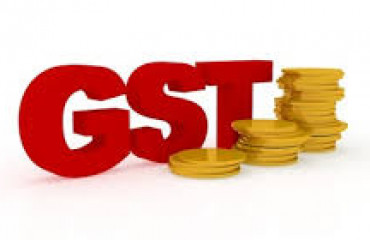
Five years ago, the goods and services tax (GST) was launched as one of India’s biggest reforms in recent years, with the purpose of making indirect taxes “good and simple". This is far from being achieved and the indirect tax regime remains complicated, with too many tax brackets and exemptions. Some progress has been made in stabilizing the technology and getting businesses to adapt to the structure through various changes.
Five years ago, the goods and services tax (GST) was launched as one of India's biggest reforms in recent years, with the purpose of making indirect taxes "good and simple". This is far from being achieved and the indirect tax regime remains complicated, with too many tax brackets and exemptions. Some progress has been made in stabilizing the technology and getting businesses to adapt to the structure through various changes. However, several reforms are still needed. States will find themselves at the crossroads as the 14% revenue growth guarantee ends, while tax rate hikes seem inevitable to boost collections even as high inflation hurts demand. Pragya Srivastava explores GST's five years, through charts:
Five years since the implementation of the goods and services tax, monthly tax collections are now consistently crossing ₹1.3 trillion, a feat celebrated by the government every month. However, revenue mop-up is far from stable. A Mint analysis of tax-collection data since the beginning shows that not only have year-on-year growth rates fluctuated, but they have also been slowing down since July 2021. More importantly, the record collections and high growth rates do not give the full picture. Collections jumped nearly 15% in nominal terms in March, but the growth rate was just 3% when adjusted for inflation.
The GST regime has completed five years and the guaranteed compensation for loss in revenue to states ceases to exist. Against the backdrop of the pandemic-led growth slowdown and volatility in GST collections, the required annual revenue growth of 14% may be difficult to achieve unless measures such as tax rate hikes are taken to augment GST collections. However, even with revenue growth of 14% or more, several states are staring at a shortfall. With states' autonomy to generate more revenue through a tax rejig largely gone, this could result in higher borrowing or spending cuts.
GST Council meetings are usually under scrutiny for their decisions on tax rates. However, over the past five years, even after several rate rejigs, tax rates for a majority of goods and services remain high and the dream of one nation one tax remains a distant one.
The demand to bring fuel under GST refuses to die down. To be sure, if that were to happen, fuel prices would come down as the effective tax rate currently runs over 50% in most parts of the country, while the highest permissible GST rate is 40%. That would mean revenue losses for both the Centre and states and, worse, it would take away their autonomy to make any further changes in fuel tax. This was the reason why the GST Council had decided against any such move in September 2021.
The GST regime has suffered from the chicken and egg problem. It is not clear if its complexity is leading to litigation or the rulings by the Authority for Advance Rulings (AAR) are adding to the confusion. This has led to situations ranging from amusing to bizarre: for instance, a ruling on how to tax pizza toppings got media attention earlier this year.
Despite the confusion over the tax structure, the GST regime has had a positive impact on business even as several issues are yet to be resolved. According to a survey by Deloitte, creating a simplified tax regime to promote ease of doing business is the biggest expectation.
